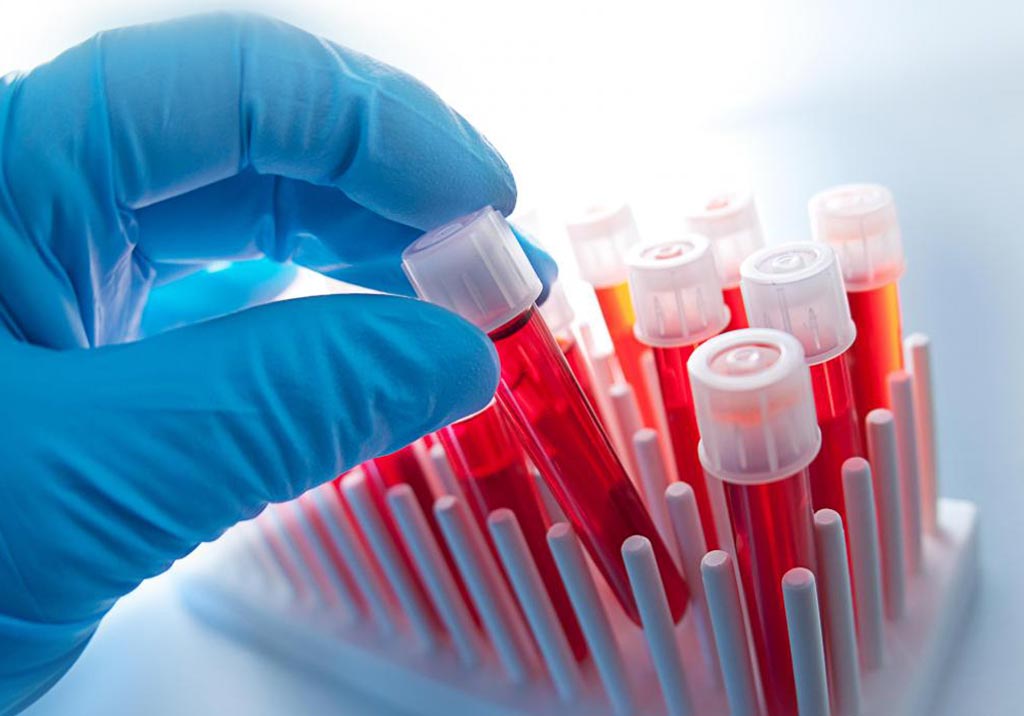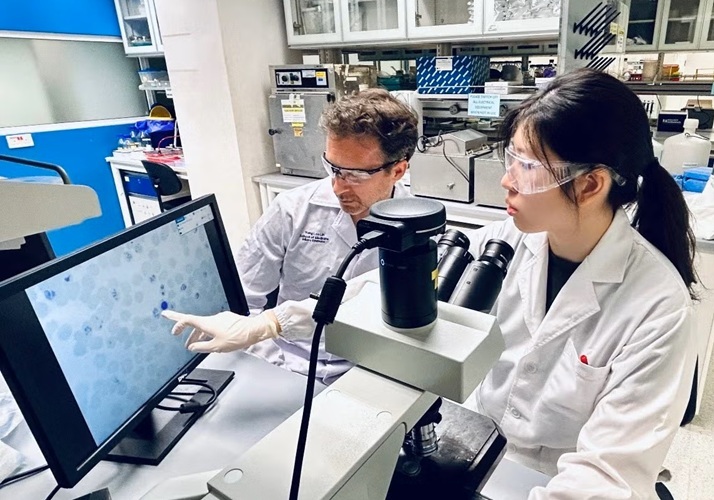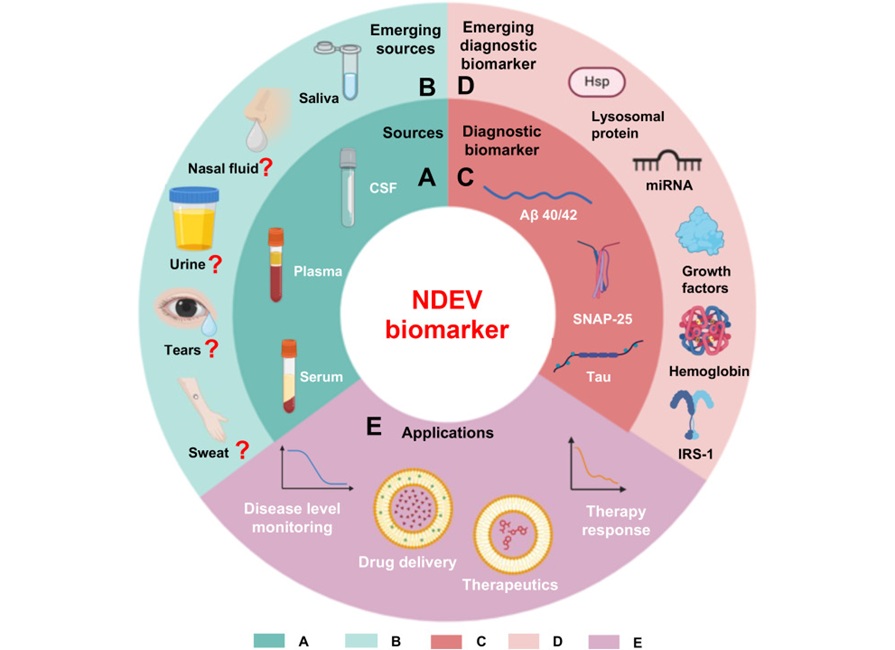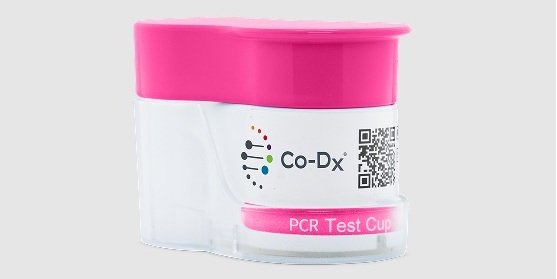Global Hematology Testing Instrument Market Driven by Growing Demand for Preventive Diagnosis and Treatment Monitoring
|
By LabMedica International staff writers Posted on 26 Aug 2021 |

Illustration
The global hematology testing instrument market is witnessing high growth due to technological advances in disease diagnosis and rise in demand for preventive diagnosis and treatment monitoring.
These are the latest findings of Transparency Market Research (Albany, NY, USA), a next-generation market intelligence provider.
Hematology involves the study of blood, in particular how blood can affect overall health. Used in different settings, hematology instruments can do blood count, detect proteins or enzymes, and help to diagnose illnesses or genetic defects. Hematology tests can evaluate a number of blood conditions including infection, anemia, inflammation, hemophilia, blood-clotting disorders, leukemia, and the body’s response to chemotherapy treatments. Tests could be routine and regular, or these may be used to diagnose serious conditions in urgent situations.
Hematology testing devices have come a long way from disease detection and monitoring to counting and characterizing blood cells. The concept of automation has extended to detecting small cell populations to diagnose rare blood conditions, which require less labor, rapid result, and easy-to-use analyzers. Current technologies include automation of hematology analyzers, electrical impedance, flow cytometry, and fluorescent flow. The combination of these technologies has increased the yield and productivity of test results. Test volume i.e., number of tests performed, is projected to increase owing to technological advances in disease diagnosis and rise in demand for preventive diagnosis and treatment monitoring. This will also augment the demand for hematology analyzers with high throughput. Such technological revolutions in hematology testing are expected to propel the market growth during the forecast period.
However, technological advancements in blood testing instruments carry a heavy price tag. A number of laboratories cannot afford highly priced instruments. Therefore, there is a need of low-volume laboratory analyzers, which are cost-effective and easy-to-use. The high cost of instruments can increase testing cost, which can restrain the growth of the global hematology diagnostic market during the forecast period.
Geographically, North America is projected to dominate the global hematology diagnostic market during the forecast period. This can be attributed to the high average selling price of automated hematology analyzers, rise in demand among surgeons for technologically-advanced diagnostic instruments with enhanced specificity & precision, and favorable coverage as per the Clinical Laboratory Improvement Amendments for in-vitro diagnostic procedures in the region.
Related Links:
Transparency Market Research
These are the latest findings of Transparency Market Research (Albany, NY, USA), a next-generation market intelligence provider.
Hematology involves the study of blood, in particular how blood can affect overall health. Used in different settings, hematology instruments can do blood count, detect proteins or enzymes, and help to diagnose illnesses or genetic defects. Hematology tests can evaluate a number of blood conditions including infection, anemia, inflammation, hemophilia, blood-clotting disorders, leukemia, and the body’s response to chemotherapy treatments. Tests could be routine and regular, or these may be used to diagnose serious conditions in urgent situations.
Hematology testing devices have come a long way from disease detection and monitoring to counting and characterizing blood cells. The concept of automation has extended to detecting small cell populations to diagnose rare blood conditions, which require less labor, rapid result, and easy-to-use analyzers. Current technologies include automation of hematology analyzers, electrical impedance, flow cytometry, and fluorescent flow. The combination of these technologies has increased the yield and productivity of test results. Test volume i.e., number of tests performed, is projected to increase owing to technological advances in disease diagnosis and rise in demand for preventive diagnosis and treatment monitoring. This will also augment the demand for hematology analyzers with high throughput. Such technological revolutions in hematology testing are expected to propel the market growth during the forecast period.
However, technological advancements in blood testing instruments carry a heavy price tag. A number of laboratories cannot afford highly priced instruments. Therefore, there is a need of low-volume laboratory analyzers, which are cost-effective and easy-to-use. The high cost of instruments can increase testing cost, which can restrain the growth of the global hematology diagnostic market during the forecast period.
Geographically, North America is projected to dominate the global hematology diagnostic market during the forecast period. This can be attributed to the high average selling price of automated hematology analyzers, rise in demand among surgeons for technologically-advanced diagnostic instruments with enhanced specificity & precision, and favorable coverage as per the Clinical Laboratory Improvement Amendments for in-vitro diagnostic procedures in the region.
Related Links:
Transparency Market Research
Latest Industry News
- BD and Penn Institute Collaborate to Advance Immunotherapy through Flow Cytometry
- Abbott Acquires Cancer-Screening Company Exact Sciences
- Roche and Freenome Collaborate to Develop Cancer Screening Tests
- Co-Diagnostics Forms New Business Unit to Develop AI-Powered Diagnostics
- Qiagen Acquires Single-Cell Omics Firm Parse Biosciences
- Puritan Medical Products Showcasing Innovation at AMP2025 in Boston
- Advanced Instruments Merged Under Nova Biomedical Name
- Bio-Rad and Biodesix Partner to Develop Droplet Digital PCR High Complexity Assays
- Hologic to be Acquired by Blackstone and TPG
- Bio-Techne and Oxford Nanopore to Accelerate Development of Genetics Portfolio
- Terumo BCT and Hemex Health Collaborate to Improve Access to Testing for Hemoglobin Disorders
- Revvity and Sanofi Collaborate on Program to Revolutionize Early Detection of Type 1 Diabetes
- GSI Group Acquires Blood Processing Equipment Manufacturer GenesisBPS
- ELITech and Hitachi High-Tech to Develop Automated PCR Testing System for Infectious Diseases
- Lumiquick Acquires Aoxre to Expand Global IVD and Research Capabilities
- Lunit and Agilent Partner to Develop AI-Powered Cancer Diagnostics
Channels
Clinical Chemistry
view channel
Compact Raman Imaging System Detects Subtle Tumor Signals
Accurate cancer diagnosis often depends on labor-intensive tissue staining and expert pathological review, which can delay results and limit access to rapid screening. These conventional methods also make... Read more
Noninvasive Blood-Glucose Monitoring to Replace Finger Pricks for Diabetics
People with diabetes often need to measure their blood glucose multiple times a day, most commonly through finger-prick blood tests or implanted sensors. These methods can be painful, inconvenient, and... Read moreMolecular Diagnostics
view channel
Blood Test Could Identify Biomarker Signature of Cerebral Malaria
Malaria remains a major cause of death and long-term disability in many low- and middle-income countries, with around 600,000 deaths reported globally each year. The most severe form, cerebral malaria,... Read more
World’s First Biomarker Blood Test to Assess MS Progression
Multiple sclerosis (MS) disease activity is caused by an abnormal immune response that results in damage to the brain and spinal cord. However, there is a lack of reliable tools to measure or predict MS progression.... Read moreHematology
view channel
MRD Tests Could Predict Survival in Leukemia Patients
Acute myeloid leukemia is an aggressive blood cancer that disrupts normal blood cell production and often relapses even after intensive treatment. Clinicians currently lack early, reliable markers to predict... Read more
Platelet Activity Blood Test in Middle Age Could Identify Early Alzheimer’s Risk
Early detection of Alzheimer’s disease remains one of the biggest unmet needs in neurology, particularly because the biological changes underlying the disorder begin decades before memory symptoms appear.... Read more
Microvesicles Measurement Could Detect Vascular Injury in Sickle Cell Disease Patients
Assessing disease severity in sickle cell disease (SCD) remains challenging, especially when trying to predict hemolysis, vascular injury, and risk of complications such as vaso-occlusive crises.... Read more
ADLM’s New Coagulation Testing Guidance to Improve Care for Patients on Blood Thinners
Direct oral anticoagulants (DOACs) are one of the most common types of blood thinners. Patients take them to prevent a host of complications that could arise from blood clotting, including stroke, deep... Read moreImmunology
view channel
Ultrasensitive Liquid Biopsy Demonstrates Efficacy in Predicting Immunotherapy Response
Immunotherapy has transformed cancer treatment, but only a small proportion of patients experience lasting benefit, with response rates often remaining between 10% and 20%. Clinicians currently lack reliable... Read more
Blood Test Could Identify Colon Cancer Patients to Benefit from NSAIDs
Colon cancer remains a major cause of cancer-related illness, with many patients facing relapse even after surgery and chemotherapy. Up to 40% of people with stage III disease experience recurrence, highlighting... Read moreMicrobiology
view channel
New UTI Diagnosis Method Delivers Antibiotic Resistance Results 24 Hours Earlier
Urinary tract infections affect around 152 million people every year, making them one of the most common bacterial infections worldwide. In routine medical practice, diagnosis often relies on rapid urine... Read more
Breakthroughs in Microbial Analysis to Enhance Disease Prediction
Microorganisms shape human health, ecosystems, and the planet’s climate, yet identifying them and understanding how they are related remains a major scientific challenge. Even with modern DNA sequencing,... Read morePathology
view channel
Genetics and AI Improve Diagnosis of Aortic Stenosis
Aortic stenosis is a progressive narrowing of the aortic valve that restricts blood flow from the heart and can be fatal if left untreated. There are currently no medical therapies that can prevent or... Read more
AI Tool Simultaneously Identifies Genetic Mutations and Disease Type
Interpreting genetic test results remains a major challenge in modern medicine, particularly for rare and complex diseases. While existing tools can indicate whether a genetic mutation is harmful, they... Read more
Rapid Low-Cost Tests Can Prevent Child Deaths from Contaminated Medicinal Syrups
Medicinal syrups contaminated with toxic chemicals have caused the deaths of hundreds of children worldwide, exposing a critical gap in how these products are tested before reaching patients.... Read more
Tumor Signals in Saliva and Blood Enable Non-Invasive Monitoring of Head and Neck Cancer
Head and neck cancers are among the most aggressive malignancies worldwide, with nearly 900,000 new cases diagnosed each year. Monitoring these cancers for recurrence or relapse typically relies on tissue... Read moreTechnology
view channel
AI Predicts Colorectal Cancer Survival Using Clinical and Molecular Features
Colorectal cancer is one of the most common and deadly cancers worldwide, and accurately predicting patient survival remains a major clinical challenge. Traditional prognostic tools often rely on either... Read more



















